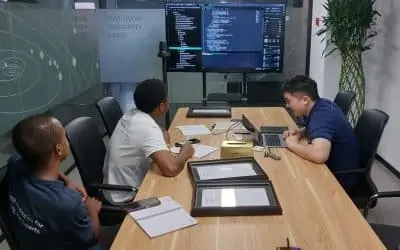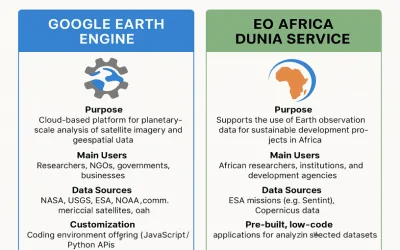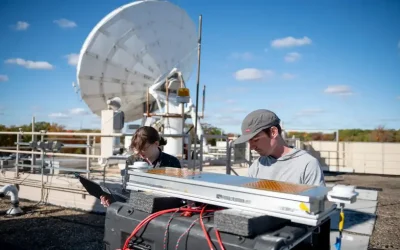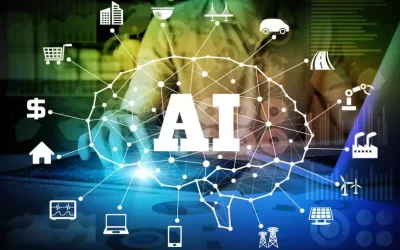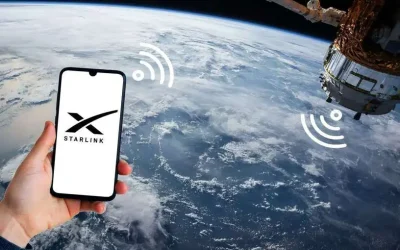Management of traffic conditions on highways with AI
AI-based image recognition is a technology that uses AI to identify written characters, patterns, human faces, objects and other information in images. The accuracy of recognition is improved by having AI read, learn from several images and process them. Whereas the image recognition is a form of pattern recognition, pattern recognition refers to the overall underlying technology that recognizes objects that have a certain meaning from various data, such as images and voice.
The AI image recognition uses machine learning technology and neural networks, where AI learns by reading and learning from huge amounts of image data and develops cognitive patterns. The accuracy of image recognition is improved by learning from continuously stored image data over time. One of the applications of AI-based image recognition is the urban traffic monitoring and management.
The term traffic AI refers to the utilization of Artificial Intelligence (AI) and Machine Learning (ML) in traffic systems management. Traffic AI systems enable urban communities to improve traffic checking and transport information investigation. The systems utilize AI models to process, examine, and provide information about the traffic conditions and frameworks. The Artificial intelligence (AI) is used in a variety of ways to improve urban traffic monitoring and management.
The AI-based traffic management system uses AI cameras and other smart devices to detect vehicles (using number plates, motion sensors etc) and monitor road traffic conditions. The road conditions such as increased traffic can be indicated in real time by using road signs or digital maps. AI image recognition, can therefore, be used together with other technologies such as Google traffic to measure the intensity of road traffic conditions and advise on the possible management strategies.

Ways that AI is being used in traffic management
Some of the most common applications of AI in traffic management include but not limited to the following.
- Incident detection and response: It can be used to analyze real-time traffic data from sensors, cameras, and other sources to identify incidents such as accidents, congestion, and road blockages. Once an incident is detected, AI can be used to dispatch responders and implement traffic management strategies to minimize disruption.
- Road traffic signal optimization: It is used to optimize traffic signal timing based on real-time traffic conditions. This can help to improve traffic flow and reduce congestion.
- Travel demand forecasting: It is utilized in forecasting traffic demand based on historical data and other factors such as weather, events, and holidays. This information can be used to plan for traffic management needs and to make adjustments to traffic signal timing and other traffic management strategies.
- Route planning and navigation: Able to provide the drivers with real-time traffic information and to recommend optimal routes. This can help drivers to avoid congestion and save time.
- Adaptive traffic signal control: As explained in Traffic AI (isarsoft.com), traditional traffic signal systems are programmed to operate on fixed schedules, proving inefficient in unanticipated scenarios and causing inefficient traffic flow. The Adaptive traffic signals are deployed to align with shifts in demand. These signals can identify peak demand conditions and adjust their timings accordingly. This helps in optimizing traffic flow and reduces congestion by placing priority on high-traffic roads.
In addition to these specific applications, AI is also being used to develop more comprehensive and integrated traffic management systems. These systems can use AI to analyze and correlate data from a variety of sources to develop a more complete understanding of traffic conditions. They can then use this information to recommend and implement traffic management strategies that are tailored to the specific needs of the city or region.
Examples of AI-powered traffic management systems
- In Pittsburgh, Pennsylvania, the Department of Transportation is using an AI-powered system to optimize traffic signal timing. The system has been shown to reduce congestion and improve travel times by up to 25%.
- In Singapore, the Land Transport Authority is using an intelligent system to predict traffic demand and to recommend optimal traffic management strategies. The system has been shown to reduce congestion and improve travel times by up to 30%.
- In London, England, the Transport for London agency is using an AI system to detect and respond to traffic incidents. The system has been shown to reduce the time it takes to respond to incidents by up to 20%.
![]() These are just a few examples of how the technology is being used to improve urban traffic monitoring and management. As the technology continues to develop, we can expect to see even more innovative and effective ways to utilize it to manage traffic and reduce congestion.
These are just a few examples of how the technology is being used to improve urban traffic monitoring and management. As the technology continues to develop, we can expect to see even more innovative and effective ways to utilize it to manage traffic and reduce congestion.
AI is transforming the way that traffic is managed in cities around the world. AI-powered traffic management systems are able to analyze vast amounts of data from sensors, cameras, and other sources to gain a real-time understanding of traffic conditions. This information can then be used to optimize traffic flow, reduce congestion, and improve safety. It can be used to optimize the timing of traffic signals based on real-time traffic conditions. This can help to improve traffic flow and reduce congestion.
——-
Also read this interesting article on: A GIS-based incidents reporting platform in Africa
——-
In addition to these specific applications, AI is also being used to develop more comprehensive and integrated traffic management systems. These systems can use AI to analyze and correlate data from a variety of sources to develop a more complete understanding of traffic conditions. They can then use this information to recommend and implement traffic management strategies that are tailored to the specific needs of the city or region.
Benefits of using AI in traffic management
- Reduced congestion: Utilized in the reduction of congestion by optimizing traffic flow and reducing the time it takes for vehicles to travel from point A to point B.
- Improved safety: Helps to improve safety by detecting incidents and dispatching responders quickly. AI can also be used to develop traffic management strategies that reduce the risk of accidents.
- Reduced emissions: Helps to reduce emissions by reducing the amount of time that vehicles spend idling in traffic.
- Improved quality of life: Aids in improvement of the quality of life of residents by reducing congestion and improving safety. This can lead to reduced stress levels, improved health outcomes, and increased economic productivity.
 Overall, AI technology as a powerful tool, augments and improves traffic management in the cities around the world. In addition, as AI technology continues to develop, we likely expect to see even more innovative and effective ways to use AI in the monitoring and management of traffic as well as reduction of congestion thereof.
Overall, AI technology as a powerful tool, augments and improves traffic management in the cities around the world. In addition, as AI technology continues to develop, we likely expect to see even more innovative and effective ways to use AI in the monitoring and management of traffic as well as reduction of congestion thereof.
In conclusion, as technology rapidly advances, the adoption of the AI, GIS and big data analytics will continue to have a huge impact in urban mobility systems. Indeed, AI has a wide scope of applications and can be utilized to make measurable impact in the creation of smart urban traffic systems.





